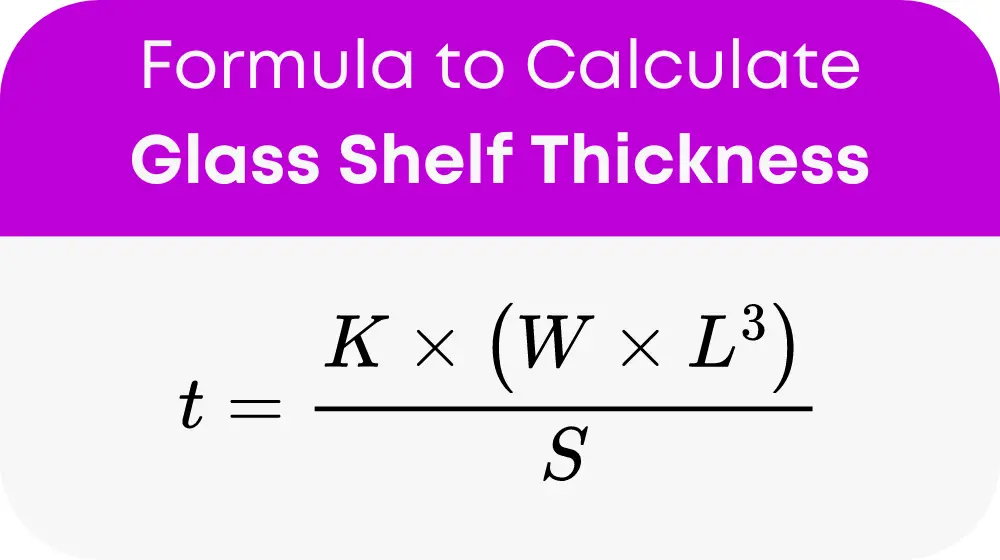A Glass Shelf Thickness Calculator is an essential tool that helps individuals and professionals determine the appropriate thickness of glass for a shelf, based on the shelf’s dimensions and the load it will carry. This calculation is crucial for preventing sagging and breaking, which can lead to dangerous accidents.
Understanding the Formula of Glass Shelf Thickness Calculator
The formula used by the calculator is:

Where:
- t is the minimum thickness of the glass shelf (in inches).
- K is a constant (approximately 0.000424 for psi and inches).
- W is the load weight the shelf needs to support (in pounds).
- L is the length of the shelf (in inches).
- S is the span between supports (in inches).
Application of the Formula
To use the formula, simply input the values for W, L, and S into the calculator. For example, if you want to determine the thickness for a shelf that is 36 inches long, will have a span between supports of 30 inches, and needs to support 50 pounds, you would calculate it as follows:
t = (0.000424 × (50 × 36^3)) / 30 t = (0.000424 × (50 × 46656)) / 30
t = (0.000424 × 2332800) / 30 t = (987.1488) / 30 t = 32.905 inches
Pre-calculated Table for Common Shelf Dimensions
For those who need quick answers, here is a table with pre-calculated values for common shelf dimensions and weights:
| Load Weight (lbs) | Length (in) | Span (in) | Minimum Thickness (in) |
|---|---|---|---|
| 20 | 24 | 20 | 0.32 |
| 30 | 36 | 30 | 0.64 |
| 50 | 48 | 40 | 0.89 |
Practical Example of Glass Shelf Thickness Calculator
Walk through a scenario where you are designing a 48-inch long shelf that must support 80 pounds with a span of 40 inches using the formula:
t = (K × (W × L^3)) / S t = (0.000424 × (80 × 48^3)) / 40
This example will show how the calculator ensures the shelf’s safety and functionality.
Most Common FAQs
To find the safest thickness for a 30-pound load on a 36-inch shelf with a 30-inch span: t = (0.000424 × (30 × 36^3)) / 30
The length of the shelf greatly impacts the required thickness because it changes the volume of glass needed to support a certain weight safely without bending.
Yes, the type of glass (tempered vs. non-tempered) affects the strength and therefore the thickness calculation. Tempered glass is stronger and may require a thinner dimension than non-tempered glass under the same conditions.